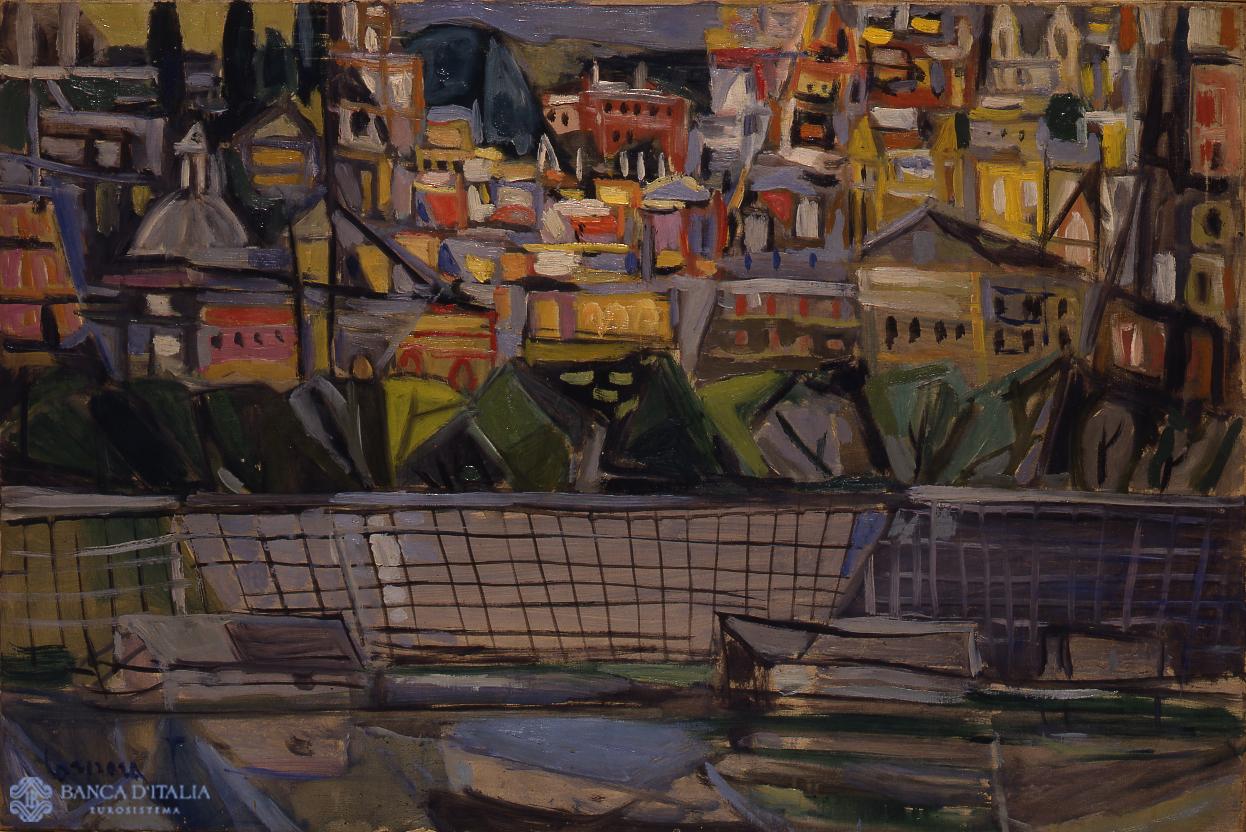The lower section of the canvas, which is divided horizontally into two nearly equal halves, contains a dense weave of virtually monochrome signs. The upper section contains a brightly coloured and chaotic view of a city, which grazes the extremely high, almost obscured skyline, flooding the space with countless chromatic notes.
Probably executed in Rome, where Corpora had settled in 1945, the work is typical of the new approach adopted by the artist. Corpora had moved back to Italy after the war from Tunisia but was nevertheless well acquainted with the novelties of French painting and close to that school which he himself, the following year, would call “Neo-Cubism”, introducing an exhibition which he held together with Guttuso, Turcato and others at the Galleria del Secolo in Rome. The style would later be adopted by many figures in the Italian painting scene, which in Corpora, just like in the French group Jeunes peintres de tradition française, would combine the cubism of Braque with the fauve colours of Matisse. Here the cubist deconstruction of space was only dawning, but it is already discernible in the thickening of the sign that appears to strip objects back to a bare minimum and scatter them on the surface, freeing them of all weight and individual plasticity.
Antonio Corpora, Veduta di città
Veduta di città
20th century AD
Painting
Landscape

Artist
Date
1945 ca.
Material and technique
Oil on canvas
Measurements
60 x 90 cm
Compiler
Fabrizio D'Amico
